
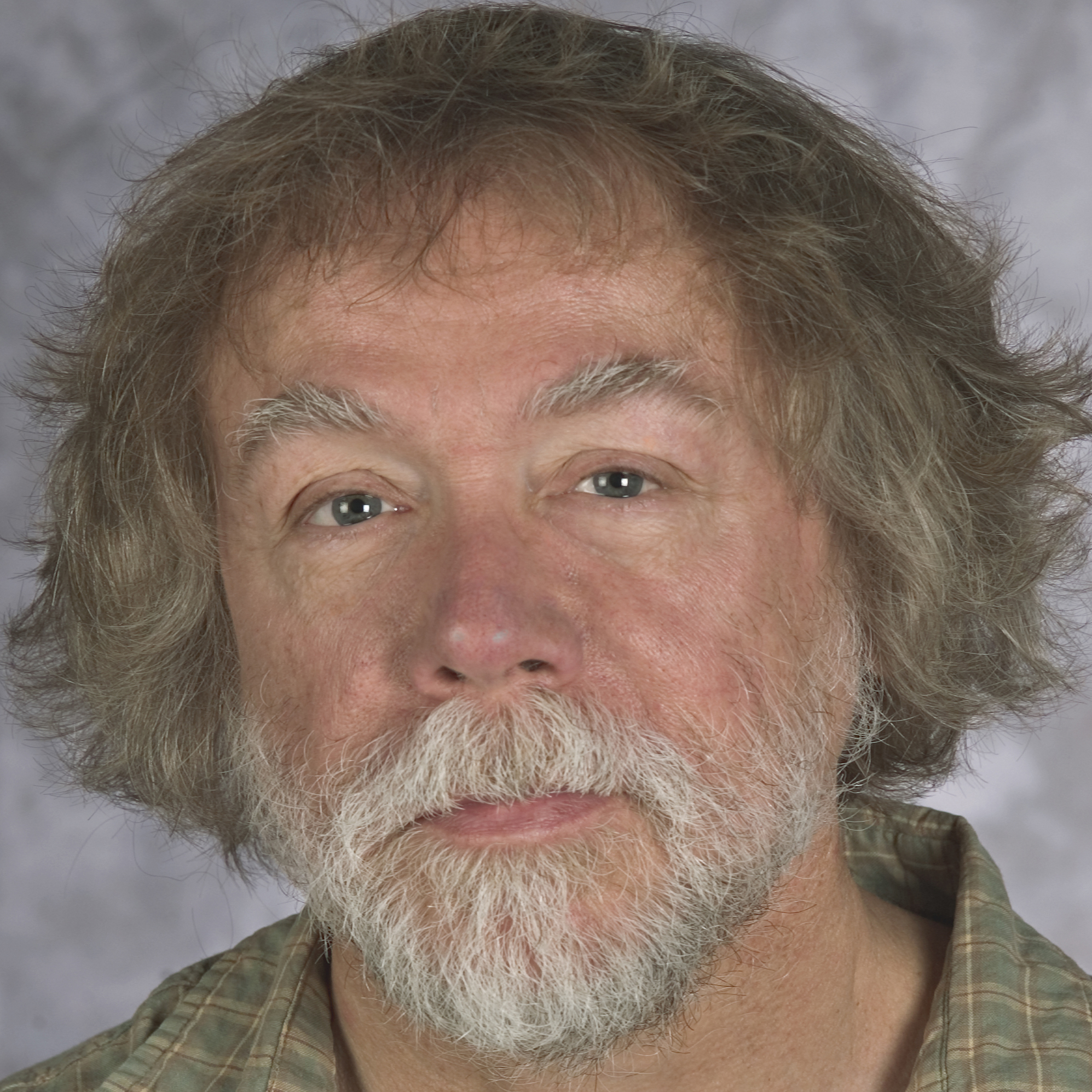
Randall Snyder
Concerto da Chiesa, for recorder, string quartet and harpsichord
Dauer: 12'
Instrumentierungsdetails:
Blockflöte
Cembalo
Violine I
Violine II
Viola
Violoncello
Concerto da Chiesa, for recorder, string quartet and harpsichord
Übersetzung, Abdrucke und mehr
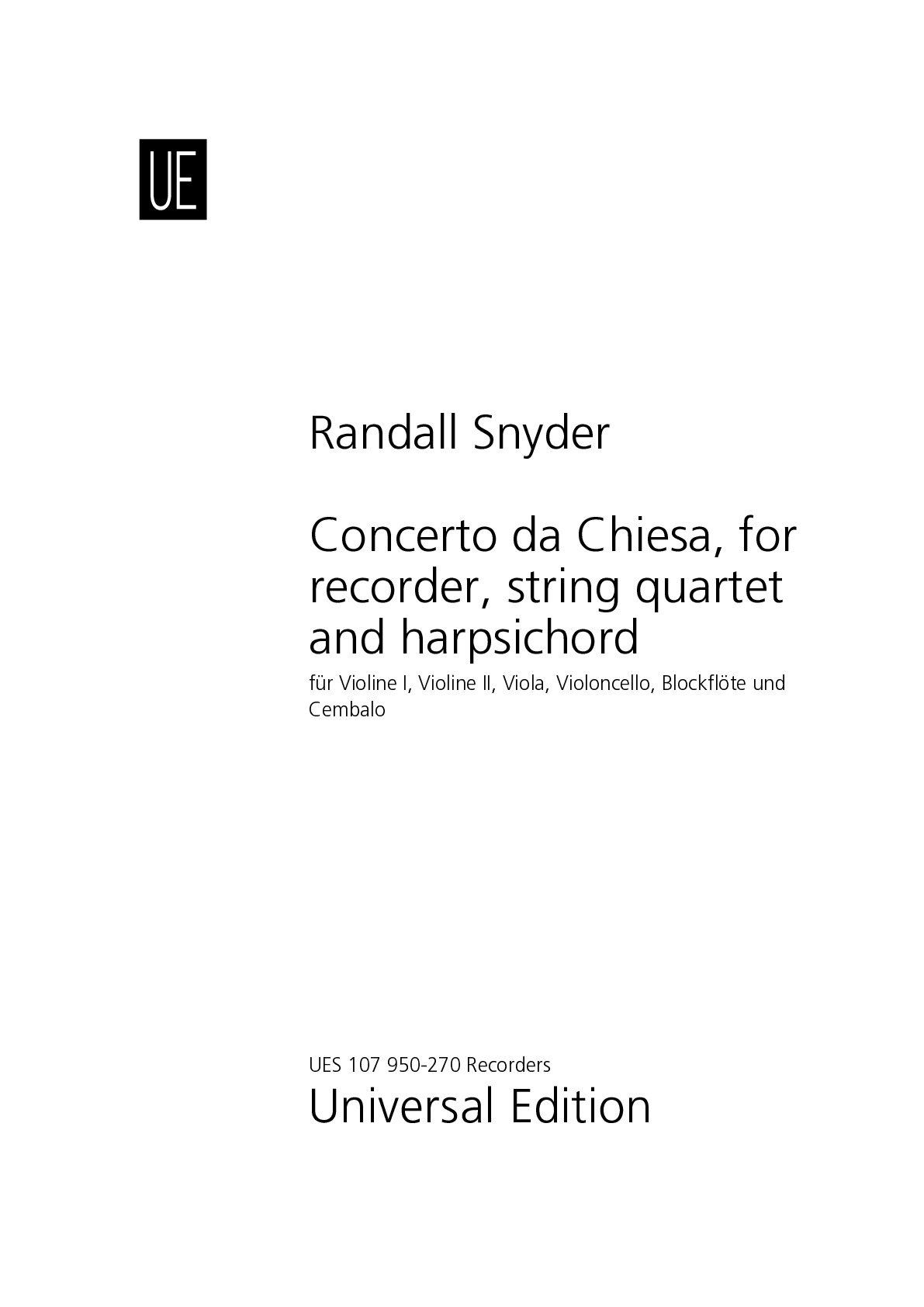
Randall Snyder
Blockflöte (Concerto da Chiesa, for recorder, string quartet and harpsichord)Ausgabeart: Stimme
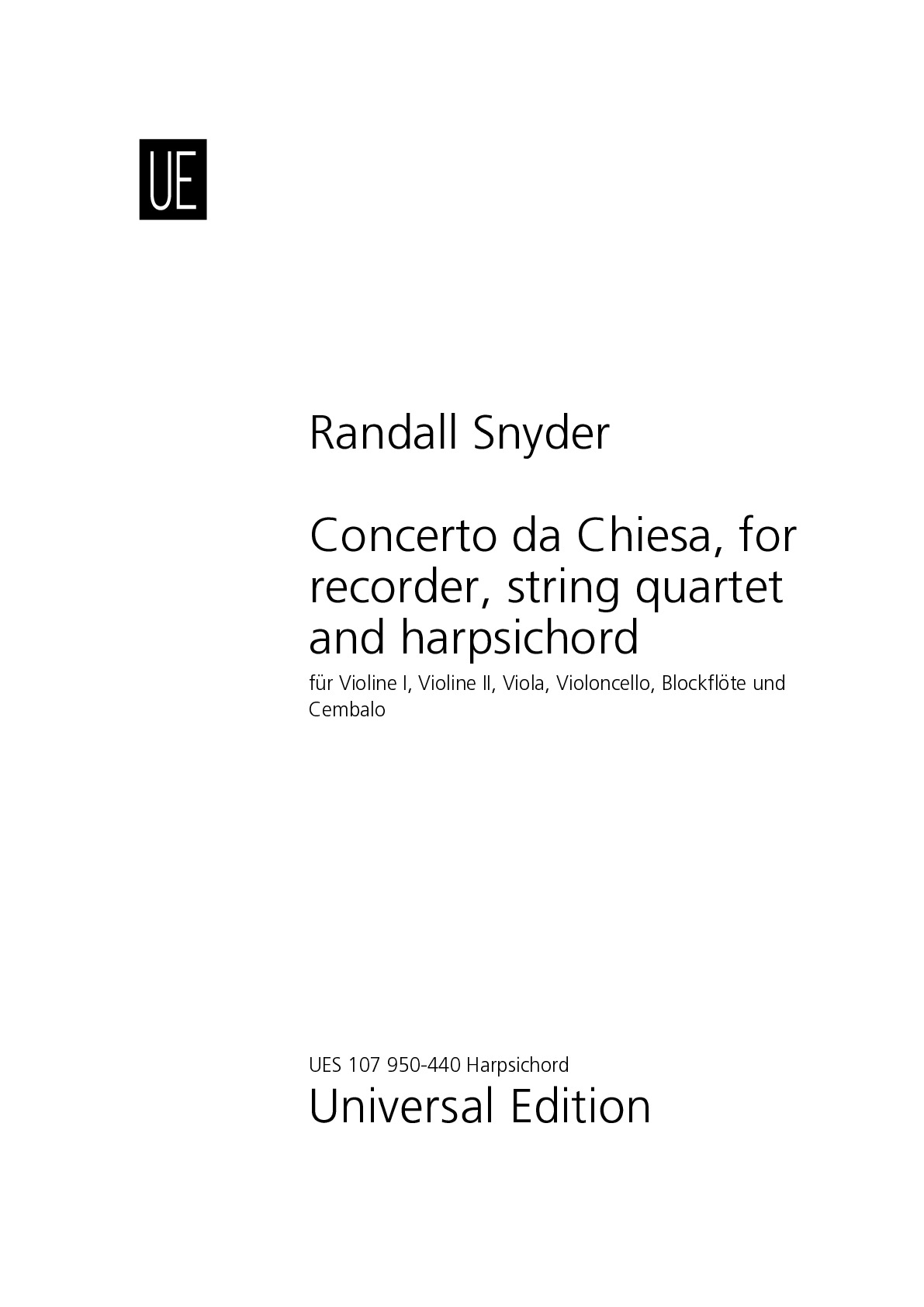
Randall Snyder
Cembalo (Concerto da Chiesa, for recorder, string quartet and harpsichord)Ausgabeart: Stimme
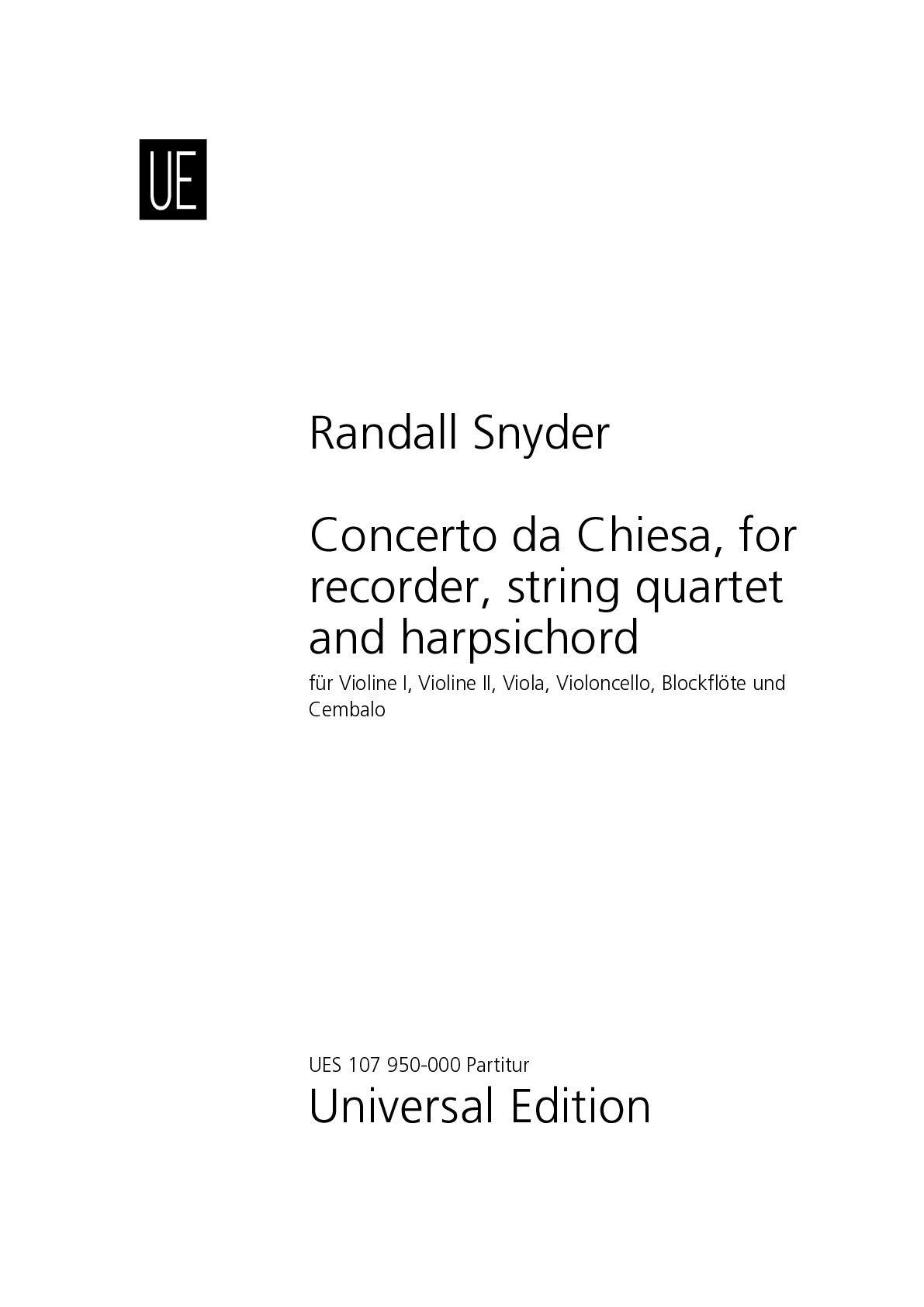
Randall Snyder
Concerto da Chiesa, for recorder, string quartet and harpsichordAusgabeart: Dirigierpartitur

Randall Snyder
Concerto da Chiesa, for recorder, string quartet and harpsichordAusgabeart: Klavierauszug

Randall Snyder
Viola (Concerto da Chiesa, for recorder, string quartet and harpsichord)Ausgabeart: Stimme
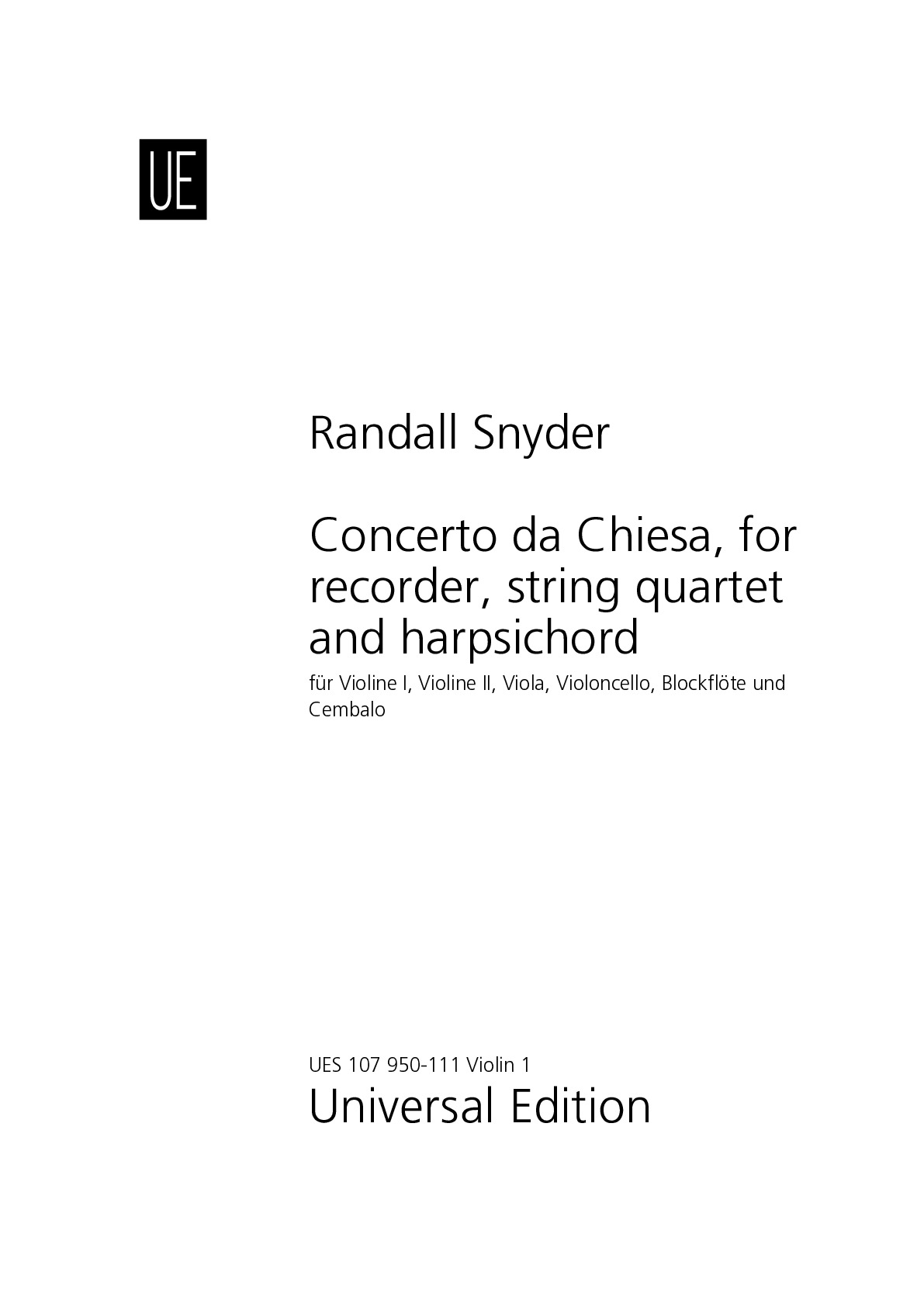
Randall Snyder
Violine I (Concerto da Chiesa, for recorder, string quartet and harpsichord)Ausgabeart: Stimme
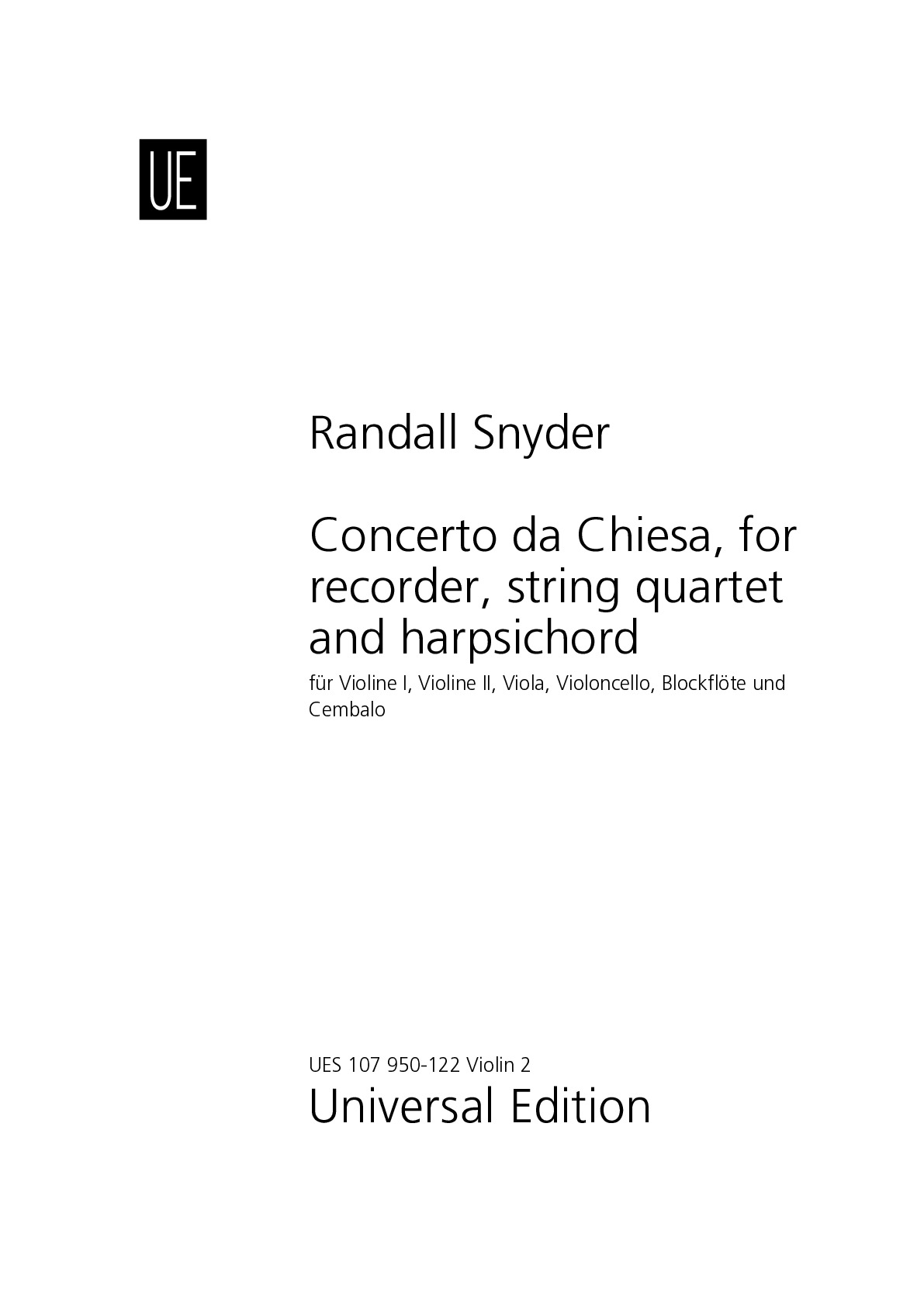
Randall Snyder
Violine II (Concerto da Chiesa, for recorder, string quartet and harpsichord)Ausgabeart: Stimme
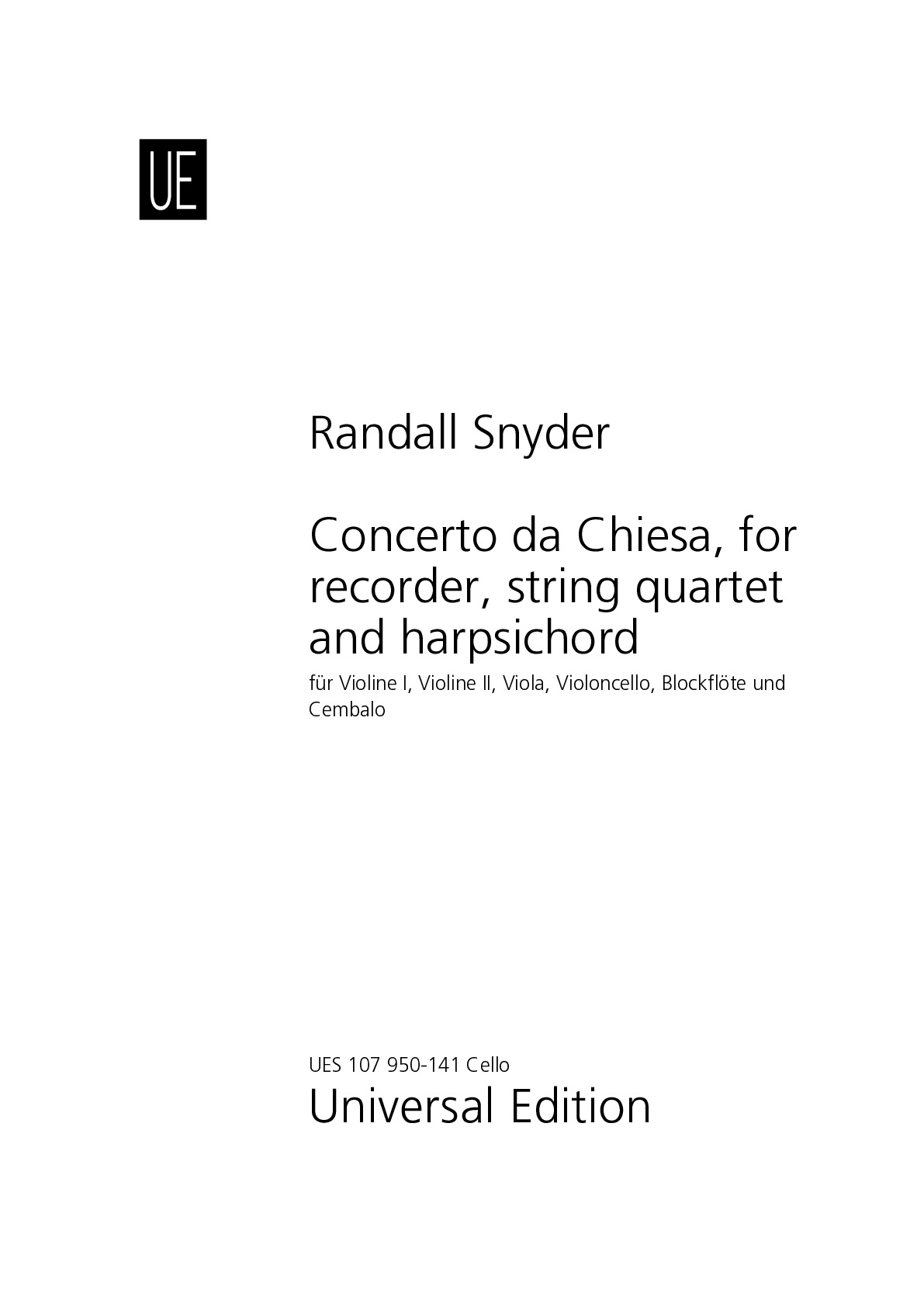
Randall Snyder
Violoncello (Concerto da Chiesa, for recorder, string quartet and harpsichord)Ausgabeart: Stimme
Musterseiten
Hörbeispiel
Werkeinführung
The expression, Concerto da Chiesa, was used in Baroque music to designate a work
to be played in a church; ts secular counterpart being the Concerto da Camera. This
piece was commissioned by John Langfeld, to be specifically performed in St, Luke.s
Lutheran Church, in Chicago Illinois. Its style can be described as neo-baroque. A slow
intrada segues to a fast movement that alternates the ensemble with the alto recorder in a
style reminiscent of Vivaldi. The slow, second movement, scored for tenor recorder, is
the most faithful to the Baroque manner. The final movement, written for soprano recorder,
is based on the harmonic progression used by Schubert in his choral Ständchen, D. 920.
The festive music builds to a climactic cadenza, leading to a short, concluding codetta..
